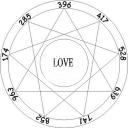The Eternal Myth Reviewed
The Eternal Myth Reviewed
Here is a review of the new set from the most recent issue of The Wire. Thanks to ihor for converting my pdf into text!
-john
Sun Ra
The Eternal Myth Revealed Volume 7
Transparency 14xCD + Pbk
A phone rings and Sonny Blount answers; Michael D Anderson from the Sun Ra Archive back on Earth wants to talk. After a brief cosmic chit chat there follows, as if channeled via seance, almost 20 hours of material which attempts to tell the story of Sun Ra's early years, from adolescence to his first albums of the mid-1950s, with extensive excerpts from Ra's personal archive, apparently entrusted to Anderson when he played with The Arkestra around the late 1970s (he is sometimes credited with percussion on 1978's Lanquidity).
Buyers take note: much of this box is not Ra's music but a ragbag of interviews with an apparently elderly Sun Ra, recordings he supposedly played on or arranged, pieces that inspired him, and third party talking heads pontificating about blues and jazz, all threaded together by a historical timeline written and narrated by Anderson. You have to get halfway through the first disc before you encounter Ra's own music in "Chocolate Factory", by The Clarence Williams Quartet. Ra had mailed them the music in 1930 and they borrowed it uncredited for this single released three years later. And it's the second disc before you hear Sun Ra on his first known recording, playing barrelhouse piano on Wynonie Harris' "Dig This Boogie", recorded in Nashville, Tennessee in 1946.
Given the sprawling and sometimes shoddy state of Sun Ra's Earthly recorded legacy, you have to wonder what this long, chaotic and somewhat subjective history will add to an understanding of his life and work- But at the start of disc four, these words make you forget all those worries, at least for the time being: "In 1946 Sonny purchased an Ampex paper-tape reel-to-reel tape. By 1948 he was recording himself on organ in an unknown church playing standards and venturing into the abstract. "
Such self-made recordings, consisting of idle doodles, rehearsal notes, intimate poetry and artist auditions taped in the late 1940s and early 50s, provide the enigmatic lure of this strange set. Did Sun Ra even want later generations to hear them? At this time he was hustling arrangement and coaching gigs for any and every kind of group in Chicago, and a tape recorder was likely a selling point for, and a witness to, all kinds of pot boiler jobs. Who knows if he expected them to stand the test of time?
A poetry piece, "If They Only Knew" (also made available on the recent Norton LP Strange Worlds In My Mind) is so intimate as to be utterly harrowing. In a sad, exhausted voice he reels out a paranoid fantasy that God has played a cosmic joke on him, and talks of taking his revenge on straight society. Conversely on "Smile", a version of the Chaplin song from Modern Times cooked up for his piano trio, he circles awkwardly back to the chorus again and again, perhaps trying out different phrasings, but with such conviction that he seems to transcend sorrow through sheer force of imagination. Not for the first time you're reminded that, due to a testicular hernia, Sun Ra might have been in physical pain his whole life.
"The Darkness Within" and "The Haunted Melody" are abstract tonal sketches apparently from 1948 and 1953. There's little corroboration in the sleeve notes, and you wonder when those titles were coined, but the music is so startling that perhaps it doesn't matter: the former explores the dimensions of the Solovox, an early electronic keyboard, while ghostly bebop bleeds through the walls from a session elsewhere; the latter is a heavy organ mode with an unidentified vocalist ululating operatically over the top, not so far away from Sunn O)))'s weirder vocal collabs.
Even more revelatory, perhaps, is how, despite the loose narratives and tangential digressions, The Eternal Myth Revealed does indeed trace deep connections to where his music came from. Sun Ra's doo-wop recordings with The Nu Sounds and The Cosmic Rays have been covered on the brilliant collections Spaceship Lullaby and lnterplanetary Melodies, but the singles here with The Red Saunders Orchestra, one of Ra's paymasters, yield cosmic tones from celeste, reverbed piano and soaring falsetto. You can hear a piano, surely Ra, rolling with benevolent anarchy beneath.
Also included are early live recordings of poor fidelity and historical interest only, and outtakes of the early studio recordings such as Sun Ro And His Solar Arkestra Visits Planet Earth are barely different to previously released versions. But many of the 78s have never been reissued, and other tracks are so absurdly rare to be virtually available for the first time. In the end, the box works like a marathon radio broadcast that drifts in and out of consciousness, between truth and guesswork. By hook or by crook, you end up within spitting distance of what Sun Ra's early years were like, with jazz, R&B, Afro-Cuban and popular music of the day all woven into a homemade patchwork of obsessive but intuitive genius"
Derek Walmsley
--
3 = 0, 3 = 1, don'tcha know

